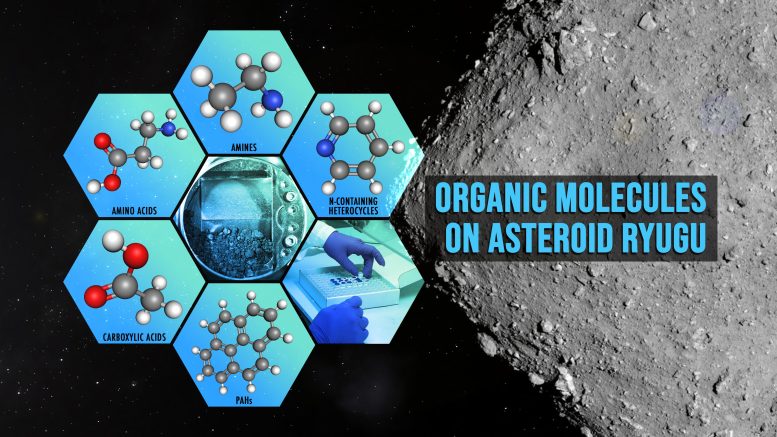
This conceptual image illustrates the types of organic molecules found in the sample of asteroid Ryugu collected by Japan’s Hayabusa2 spacecraft. Organics are the building blocks of all known forms of terrestrial life and consist of a wide variety of compounds made of carbon combined with hydrogen, oxygen, nitrogen, sulfur, and other atoms. However, organic molecules can also be created by non-living processes, such as chemical reactions in asteroids. Credit: NASA/JAXA/Dan Gallagher
Asteroid Ryugu has a rich complement of organic molecules, according to a NASA and international team’s initial analysis of a sample from the asteroid’s surface delivered to Earth by Japan’s Hayabusa2 spacecraft. The discovery adds support to the idea that organic material from space contributed to the inventory of chemical components necessary for life.
Organic molecules are the building blocks of all known forms of terrestrial life and consist of a wide variety of compounds made of carbon combined with hydrogen, oxygen, nitrogen, sulfur, and other atoms. However, organic molecules can also be made by chemical reactions that don’t involve life, supporting the hypothesis that chemical reactions in asteroids can make some of life’s ingredients.
NASA scientist Heather Graham receives a shipment of asteroid Ryugu samples from her colleagues at the Japan Aerospace Exploration Agency (JAXA). Asteroid 162173 Ryugu is a carbon-rich pile of rubble, with an orbit that passes between Earth and Mars and a shape that resembles a kilometer-wide spinning top. Scientists think that Ryugu contains pristine organic material from the dawn of the solar system – and that it could hold clues to the formation and evolution of life. That’s why the Japan Aerospace Exploration Agency (JAXA) sent the Hayabusa2 spacecraft to study Ryugu and collect a sample, which it delivered to the Australian Outback in December 2020. Now, NASA scientist Heather Graham has received a box of Ryugu’s treasures from her JAXA colleagues, bringing a relic of the early solar system to a lab on Earth. Credit: NASA’s Goddard Space Flight Center
The science of prebiotic chemistry attempts to discover the compounds and reactions that could have given rise to life, and among the prebiotic organics found in the sample were several kinds of amino acids. Certain amino acids are widely used by terrestrial life as a component to build proteins. Proteins are essential to life as they are used to make enzymes which speed up or regulate chemical reactions and to make structures from microscopic to large such as hair and muscles. The sample also contained many types of organics that form in the presence of liquid water, including aliphatic amines, carboxylic acids, polycyclic aromatic hydrocarbons, and nitrogen-containing heterocyclic compounds.
“The presence of prebiotic molecules on the asteroid surface despite its harsh environment caused by solar heating and ultraviolet irradiation, as well as cosmic-ray irradiation under high-vacuum conditions, suggests that the uppermost surface grains of Ryugu have the potential to protect organic molecules,” said Hiroshi Naraoka of Kyushu University, Fukuoka, Japan. “These molecules can be transported throughout the solar system, potentially dispersing as interplanetary dust particles after being ejected from the uppermost layer of the asteroid by impacts or other causes.” Naraoka is lead author of a paper about this research published online on February 24 in the journal Science.
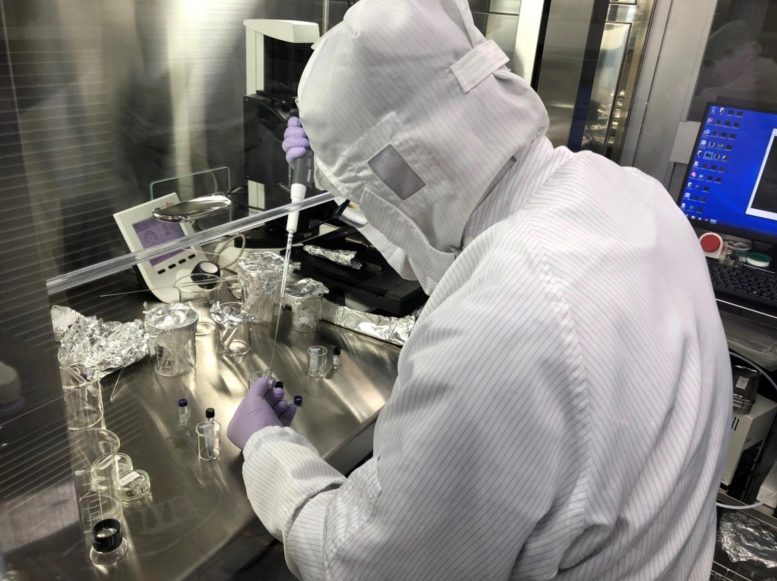
Solvent extractions of the Ryugu samples on a clean bench (ISO6, Class 100) inside a clean room (ISO5, Class 1000) performed by Hiroshi Naraoka at Kyushu University in Japan. Credit: JAXA
“So far, the amino acid results from Ryugu are mostly consistent with what has been seen in certain types of carbon-rich (carbonaceous) meteorites that have been exposed to the most water in space,” said Jason Dworkin of NASA’s Goddard Space Flight Center in Greenbelt, Maryland, a co-author of the paper.
“However, sugars and nucleobases (components of DNA and RNA) which have been discovered in some carbon-rich meteorites, have not yet been identified in samples returned from Ryugu,” said Daniel Glavin of NASA Goddard, a co-author of the paper. “It is possible these compounds are present in asteroid Ryugu but are below our analytical detection limits given the relatively small sample mass available for study.”
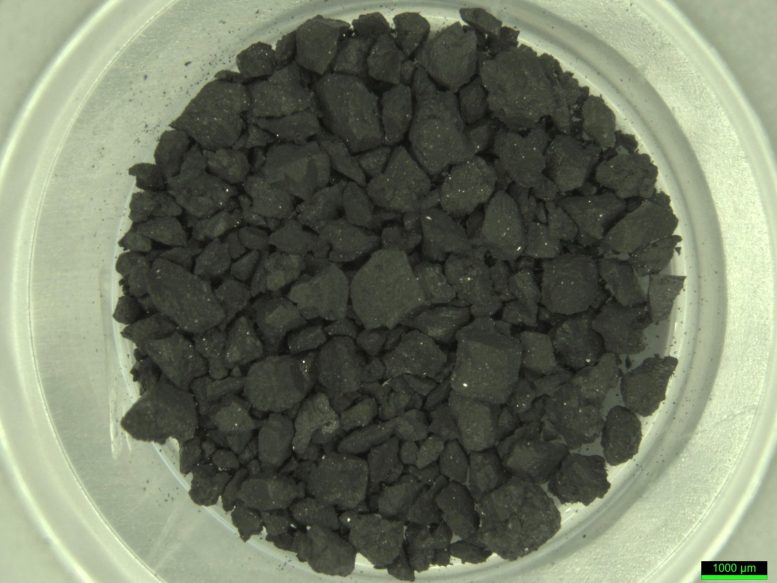
Aggregate sample of the Ryugu grains (A0106) allocated to the Hayabusa2 Initial Analysis Soluble Organic Matter Team from the Japan Aerospace Exploration Agency for a variety of organic molecular analyses. Credit: JAXA
The Hayabusa2 spacecraft collected the samples on February 22, 2019, and delivered them to Earth on December 6, 2020. They were extracted in Japan in July 2021 and analyzed at Goddard in the Fall of 2021. A very small amount of sample (30 milligrams or about 0.001 ounce) was allocated for the international soluble organic analysis team. The sample was extracted (like tea) in many different solvents in Japan and analyzed in labs in Japan, Goddard, and Europe using a vast range of machines like those in a forensics lab.
This work is the first organic analysis of the Ryugu sample, and the samples will be studied for years. “We will do a direct comparison of the samples from Ryugu and the sample from asteroid Bennu when NASA’s OSIRIS-REx mission returns it to Earth in 2023,” said Dworkin. “OSIRIS-REx is expected to return much more sample mass from Bennu and will provide another important opportunity to look for trace organic building blocks of life in a carbon-rich asteroid.”
Reference: “Soluble organic molecules in samples of the carbonaceous asteroid (162173) Ryugu” by Hiroshi Naraoka, Yoshinori Takano, Jason P. Dworkin, Yasuhiro Oba, Kenji Hamase, Aogu Furusho, Nanako O. Ogawa, Minako Hashiguchi, Kazuhiko Fukushima, Dan Aoki, Philippe Schmitt-Kopplin, José C. Aponte, Eric T. Parker, Daniel P. Glavin, Hannah L. McLain, Jamie E. Elsila, Heather V. Graham, John M. Eiler, Francois-Regis Orthous-Daunay, Cédric Wolters, Junko Isa, Véronique Vuitton, Roland Thissen, Saburo Sakai, Toshihiro Yoshimura, Toshiki Koga, Naohiko Ohkouchi, Yoshito Chikaraishi, Haruna Sugahara, Hajime Mita, Yoshihiro Furukawa, Norbert Hertkorn, Alexander Ruf, Hisayoshi Yurimoto, Tomoki Nakamura, Takaaki Noguchi, Ryuji Okazaki, Hikaru Yabuta, Kanako Sakamoto, Shogo Tachibana, Harold C. Connolly, Dante S. Lauretta, Masanao Abe, Toru Yada, Masahiro Nishimura, Kasumi Yogata, Aiko Nakato, Miwa Yoshitake, Ayako Suzuki, Akiko Miyazaki, Shizuho Furuya, Kentaro Hatakeda, Hiromichi Soejima, Yuya Hitomi, Kazuya Kumagai, Tomohiro Usui, Tasuku Hayashi, Daiki Yamamoto, Ryota Fukai, Kohei Kitazato, Seiji Sugita, Noriyuki Namiki, Masahiko Arakawa, Hitoshi Ikeda, Masateru Ishiguro, Naru Hirata, Koji Wada, Yoshiaki Ishihara, Rina Noguchi, Tomokatsu Morota, Naoya Sakatani, Koji Matsumoto, Hiroki Senshu, Rie Honda, Eri Tatsumi, Yasuhiro Yokota, Chikatoshi Honda, Tatsuhiro Michikami, Moe Matsuoka, Akira Miura, Hirotomo Noda, Tetsuya Yamada, Keisuke Yoshihara, Kosuke Kawahara, Masanobu Ozaki, Yu-ichi Iijima, Hajime Yano, Masahiko Hayakawa, Takahiro Iwata, Ryudo Tsukizaki, Hirotaka Sawada, Satoshi Hosoda, Kazunori Ogawa, Chisato Okamoto, Naoyuki Hirata, Kei Shirai, Yuri Shimaki, Manabu Yamada, Tatsuaki Okada, Yukio Yamamoto, Hiroshi Takeuchi, Atsushi Fujii, Yuto Takei, Kento Yoshikawa, Yuya Mimasu, Go Ono, Naoko Ogawa, Shota Kikuchi, Satoru Nakazawa, Fuyuto Terui, Satoshi Tanaka, Takanao Saiki, Makoto Yoshikawa, Sei-ichiro Watanabe and Yuichi Tsuda, 24 February 2023, Science.
DOI: 10.1126/science.abn9033
Hayabusa2 is led by the Japan Aerospace Exploration Agency (JAXA) in collaboration with the German Space Center (DLR) and the French Space Agency (CNES), and supported by NASA and the Australian Space Agency (ASA). NASA supported the research under the Consortium for Hayabusa2 Analysis of Organic Solubles.

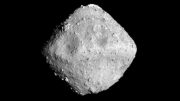
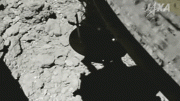
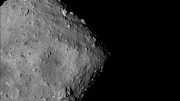
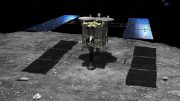

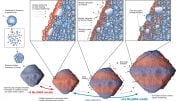
Be the first to comment on "NASA Discovers Organic Molecules on Asteroid Ryugu, Bolstering Theory of Extraterrestrial Life Ingredients"